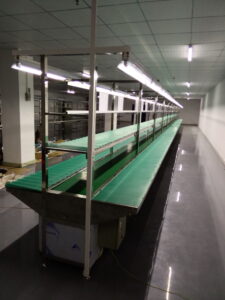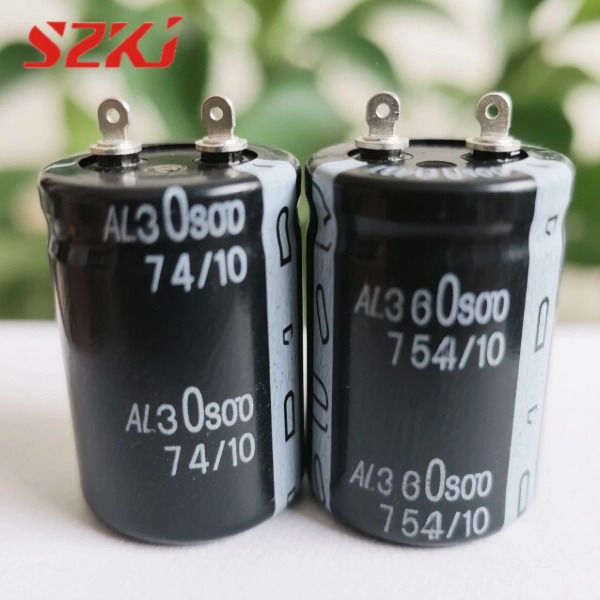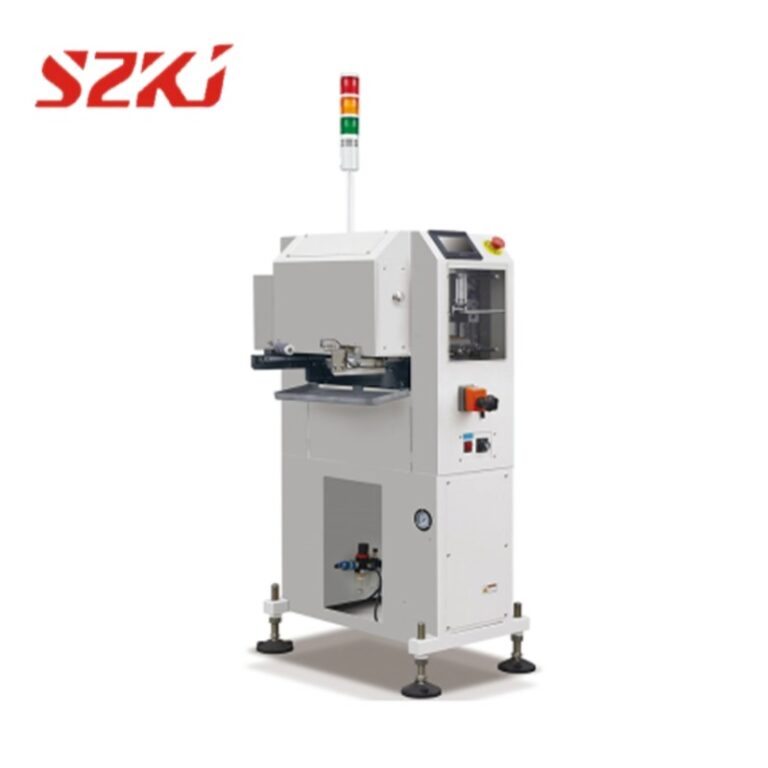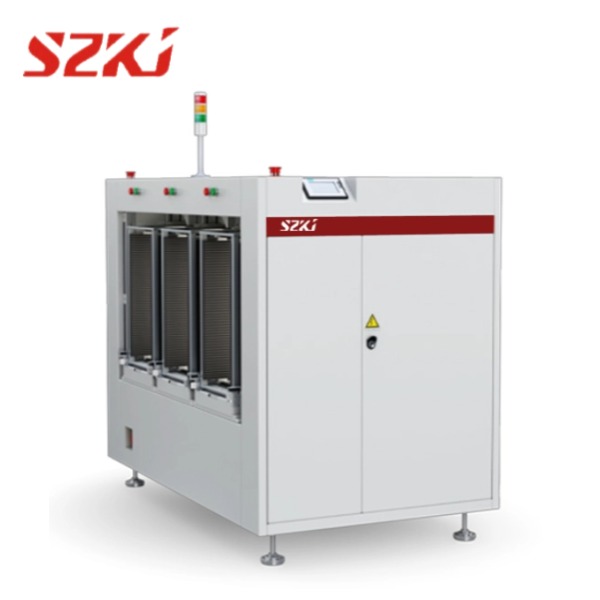Table of Contents
ToggleVisualize completing a puzzle where every piece must fall effortlessly into place, one after the other, without a single hitch. In Electronics Manufacturing, the PCB conveyor belt is that steady hiding hand that does this job. It is not just a tool but also the backbone of precision in your assembly line. But how exactly does it achieve all this?
In this article, we will discuss the role, key features, types, and benefits of PCB conveyor belts. So, let’s get into it.

The Role of PCB Conveyor Belts in Electronics Manufacturing
In the manufacturing industry, conveyors transport products along straight paths or in different directions. A PCB conveyor belt is a specialized transport system that moves PCBs from one workstation to another.
These belts are a part of SMT production lines, which demand precision and timing. They ensure that every component on a circuit board is treated with care, from placement to inspection, through a stable and controlled environment.
Key Features of PCB Conveyor Systems
Understanding the features of PCB conveyor belts is important to selecting the most appropriate system for your manufacturing requirements.
Key features include:
● Motorised Belts
These PCB conveyor belts are designed to carry PCBs smoothly and can be personalized in width and length.
● Integrated Workstation
Conveyor systems have specific areas such as component placement, soldering, and inspection. It helps to minimize the workflow.
● Speed Control
Various control systems offer variable speeds with which manufacturers can change and optimize the flow of the PCBs to adjust for their assembly processes.
● ESD Protection
ESD(Electrostatic discharge) protection is a must in electronics manufacturing. Many PCB conveyor belts are made with ESD materials to prevent damage.

Types of PCB Conveyor Belts
The types of PCB conveyor belts depend on the needs of production.
Here are some of the common types:
1. Flat Belt Conveyors
This is the most common type, featuring a flat surface ideal for transporting PCBs.
2. Edge Belt Conveyors
They provide side belts to ensure the safety and moving of the PCBs through the production lines.
3. SMT Link Conveyors
These are developed exclusively for SMT lines with variable rail width and precise positioning controls.
Comparison Table of Conveyor Types
| Types | Features | Best Use Cases |
| Flat Belt Conveyors | Simple design, easy maintenance | General PCB transport |
| Edge Belt Conveyors | Securely holds PCBs using side belts | High-speed assembly lines |
| SMT Link Conveyors | Adjustable widths, precision control | SMT processes |
Modular Conveyors
These are flexible and allow the manufacturer to reconfigure the conveyor system.
Advantages of Using PCB Conveyor Belts
Here are some reasons why PCB conveyor belts are significant
● Better Productivity
You can fully automate the transport of PCBs. This results in diminished cycle time and improved output.
● Low Labour Cost
With less manual handling, companies can reduce labor costs while using Human resources for more sensitive tasks.
● Quality Control
PCB Conveyor System provides real-time quality checks and removes defective PCBs from the production line.
● Minimised Errors
Automated systems decrease the chances of human error during assembly, resulting in top-notch products.
Applications of PCB Conveyor Belts
PCB conveyor belts are flexible and used in many stages of electronics assembly:
- Pick-and-Place Machines: These are used for the accurate placement of components.
- Inspection and Testing: Ensuring that every PCB meets the quality standard.
- Reflow Soldering: To carry PCBs through high-temperature ovens.
- Buffering Stations: They Offer temporary storage for PCBs during production slowdown.
Conclusion
PCB conveyor belts are essential to modern electronics manufacturing, enhancing efficiency and ensuring high-quality output. Knowing PCB conveyor belt’s features, types, and advantages will help manufacturers make informed decisions that optimize their assembly processes. Investing in a reliable PCB conveyor system streamlines production and positions companies for success in an increasingly competitive market.
Frequently Asked Questions (FAQs)
What is a PCB conveyor belt?
A PCB conveyor belt is a specialized transport system designed to move printed circuit boards through the different stages of the manufacturing process, including assembly, testing, and inspection.
Can PCB conveyor systems be customized?
Yes, many manufacturers offer customizable solutions that enable businesses to customize the conveyor systems to their production requirements.
What materials are typically used in PCB conveyor belts?
PCB conveyor belts are typically made of long-lasting materials like rubber or PVC. These flexible and strong materials ensure that PCBs are moved without damage.
How do I choose the right PCB conveyor belt for my needs?
Choosing the right conveyor belt depends on several factors:
● Size and type of PCBs being handled
● Required speed and throughput
● Integration capabilities with existing machinery
● Specific features needed for your production line (e.g., ESD safety)
How long does a PCB conveyor belt last?
The operating conditions may dictate the lifetime of a PCB conveyor belt. In the best-case scenario, adequate maintenance can serve more than ten years. Under severe operating conditions, replacements may become more frequent.
Can I add a new PCB conveyor system to my current production line?
Yes, most modern PCB conveyor systems are designed to be easily integrated into existing setups. Providing the supplier with detailed information about your facility’s layout and current equipment will smooth the integration process.
Recommended Products
For businesses looking to enhance their electronics assembly lines with effective PCB conveyor solutions, consider these options:
NC-BC-460 SMT PCB Conveyor PCB Conveyor for SMT Production Line
Advantages
- Modular Structure: Ensures stability and simplifies maintenance for efficient operations.
- Adjustable Conveying Width: Adapts to various product sizes, meeting diverse production needs.
- High-Quality Belt System: Durable materials offer reliable, long-lasting performance.
- Compact and Versatile Design: Space-saving and compatible with multiple conveyor types.
- Enhanced Safety Features: Protects operators and products with advanced safety mechanisms.
- Seamless Integration: Eliminates bottlenecks and connects production line equipment effectively.
- Low Maintenance Requirements: Minimizes disruptions, keeping workflows smooth and uninterrupted.
NC-BC-460 1000mm Cooling Conveyor for PCB
Advantages
- Efficient Heat Dissipation: High-quality cooling fans ensure rapid and uniform cooling.
- Thermal Shock Prevention: Gradual cooling reduces the risks of cracks and structural issues in PCBs.
- Precision Control: Panasonic PLC program and adjustable modes allow seamless operation.
- Customizable Width: Easy manual or optional automatic width adjustments for various PCB sizes.
- Stable Operations: Heavy-bottom design prevents shifting, ensuring consistent performance.
- Adaptable PCB Flow: Configurable flow direction suits diverse production setups.
- Timer-Based Cooling: Cooling duration can be tailored to match specific product needs.




